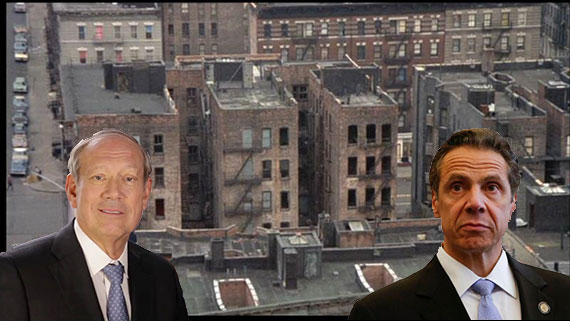Trending
Tenant advocates lost political muscle over last 18 years: report
As units went market-rate, fewer were left to fight decontrol

Governor Andrew Cuomo pushed through an inflation-adjusted vacancy-decontrol threshold lower than the one Governor George Pataki put in place in 1997 because political backing for stronger rent protections has dwindled over the last 18 years, according to tenant advocates.
The waning power can be traced back to Pataki’s decision to reinstitute vacancy deregulation in 1997, allowing apartments to become market rate when unit rents hit $2,000 ($2,973 in today’s dollars, adjusted for inflation), advocates told WNYC. Cuomo set the limit at $2,700 a few weeks ago.
Tenant advocates in 18 years ago warned that bringing back decontrol would eventually diminish the number of rent-regulated apartments – and, therefore, the number of middle-class tenants in favor of the protections – to the point where there would be no political clout to battle decontrol. It’s proven prescient.
“There would be so few apartments left under rent control or rent stabilization, tenants would no longer have the political muscle to get the laws renewed,” said Michael McKee with the New York State Tenants and Neighbors Coalition.
In the 18 years since Pataki – who is now a long-shot candidate for the Republican Party presidential nomination – brought back decontrol, 70,688 rent-regulated apartments in Manhattan went market rate, according to US Census figures sited by the news station.
Other major factors included a loophole in city laws that allow co-ops to be deregulated after conversion.
Roberta Gold, author of When Tenants Claimed the City, even took Mayor Bill de Blasio to task, saying his inclusionary zoning program has created few low-rent units and pushes gentrification to historically inexpensive areas. – Rich Bockmann




